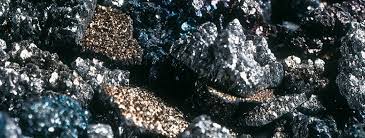
by Bill Schlesinger
Humans extract minerals from the Earth’s crust to enhance the availability of these materials in our economy and often in the environment. For many metals, the mobilization from mining greatly exceeds the natural release of the elements from the weathering and breakdown of rocks. For arsenic, lead, mercury, and vanadium more metal circulates through the atmosphere from human activities than from the sum of all natural processes. This is the science of global biogeochemistry—an evaluation of human impacts on the chemical environment of planet Earth.
With its toxic properties, arsenic was once used extensively as a fungicide in agriculture and as a preservative of wood against decay. Today, recognizing that arsenic is toxic to humans, many of these uses have been curtailed. Releases of lead from leaded gasoline and flaking house paints have also been curtailed.
Metals are also released to the environment inadvertently. Arsenic is released during the production of copper and other metals when mining wastes, known as slag, are leached by rainwater. The same is true of coal ash. Fortunately, much of the arsenic mobilized from slag is adsorbed to iron oxide minerals, so it is not dissolved in large quantities in the waters used by humans. For some other toxic metals, such as cadmium, concentrations in drainage waters from coal ash are a known health hazard.
Large quantities of arsenic are also released to the atmosphere during the mining and smelting of metals, such as copper, lead, and zinc. In the developed world, air pollution regulations limit the amount of arsenic that is released, but globally as much as 30,000 tons of arsenic are vented to the atmosphere each year, where it may circulate over large areas. Another 6,000 tons is likely emitted during the combustion of coal. Our recent analysis suggests that the amount of arsenic released to the atmosphere worldwide from human activities adds 157% to the amount circulating naturally, from forest fires, volcanoes, and wind erosion. In a very real sense, we are bathed in, and breathe, an atmosphere with an arsenic content vastly in excess of what we have experienced during our evolutionary history as a species. It is more than worrisome that arsenic is a well-known carcinogen.
As demand for products increases, driven by a rising human population, the need to curtail inadvertent releases of toxic elements, such as mercury, cadmium, vanadium, and arsenic, will be essential to maintain a healthy environment. Many of these elements have significant economic value, motivating their recovery from air and water effluents, if we care to do so.
References:
Chen, T., X.-C. Wen, et al. 2022. The geochemical and mineralogical controls on the release characteristics of potentially toxic elements from lead/zinc (Pb/Zn) mine tailings. Environmental Pollution doi: 10.1016/j.envpol.2022.120328
Schlesinger, W.H., E.M. Klein, and A. Vengosh. 2022. The global biogeochemical cycle of arsenic. Global Biogeochemical Cycles doi: 10.1029/2022GB007515
Sen, I.S. and B. Peucker-Ehrenbrink. 2012. Anthropogenic disturbance of element cycles at the Earth’s surface. Environmental Science and Technology 46: 8601-8609
Zhang, L., Y. Gao, et al. 2020. Global impact of atmospheric rsenic in health risk: 2005-2015. Proceedings of the National Academy of Sciences 117: 13975-13982.